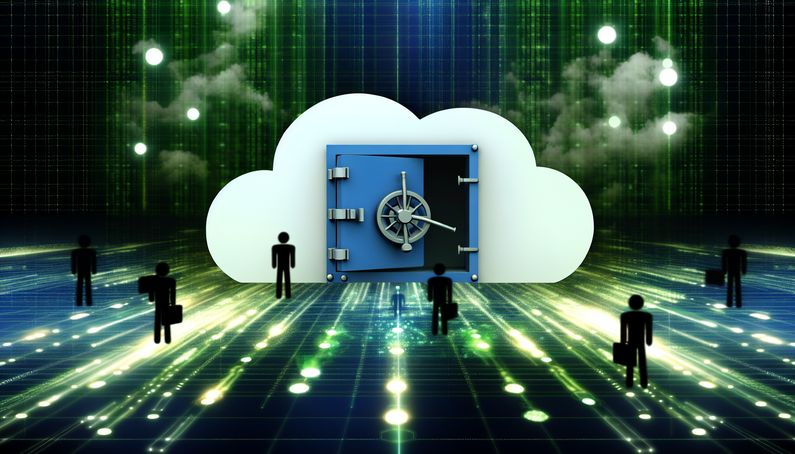
The 2024 Snowflake Data Theft Attacks: A Comprehensive Analysis
The 2024 Snowflake data theft attacks have become a pivotal case study in cybersecurity, illustrating the vulnerabilities inherent in cloud storage systems when targeted by sophisticated cybercriminals. These attacks, orchestrated by groups like ShinyHunters, exploited compromised credentials to infiltrate Snowflake’s cloud environment, affecting major organizations such as Ticketmaster, Santander, and Neiman Marcus. The breach exposed sensitive customer data, including credit card numbers and account balances, raising significant concerns about identity theft and financial fraud (BleepingComputer; Trustwave). This incident underscores the critical need for robust security measures, such as multi-factor authentication, to protect against unauthorized access and data breaches.
The 2024 Snowflake Data Theft Attacks
Background of the Snowflake Data Breach
The 2024 Snowflake data theft attacks represent a significant cybersecurity incident that involved the unauthorized access and exfiltration of data from the cloud storage firm, Snowflake. The attacks were primarily perpetrated by exploiting compromised credentials, which were obtained through infostealing malware. The threat actors involved, identified as ShinyHunters and potentially others, targeted Snowflake’s customers, leading to a widespread breach affecting numerous organizations, including Ticketmaster, Santander, and Neiman Marcus. The breach exposed sensitive information such as customer data, credit card numbers, and account balances, posing severe risks of identity theft and financial fraud (BleepingComputer; Trustwave).
Methodology of the Attack
The attackers utilized a combination of infostealing malware and compromised credentials to gain unauthorized access to Snowflake’s cloud storage environment. The malware was designed to harvest login credentials from infected systems, which were then used to access Snowflake accounts. The breach was not attributed to any vulnerability or misconfiguration within Snowflake’s platform itself, but rather to the exploitation of single-factor authentication mechanisms used by some of its customers (Trustwave).
Impact on Ticketmaster and Other Organizations
The breach had a profound impact on Ticketmaster, with over 569 GB of data being compromised. This data included personal and ticketing information, which was subsequently offered for sale on the dark web by extortion groups such as Arkana Security. The breach also affected other high-profile organizations, including Santander and Neiman Marcus, leading to increased risks of data exposure and financial loss for affected customers (BleepingComputer; CRN).
Response and Mitigation Efforts
In response to the breach, Snowflake, in collaboration with cybersecurity firms CrowdStrike and Mandiant, launched an investigation to assess the extent of the compromise and identify affected accounts. The investigation confirmed that the breach was not due to any inherent vulnerabilities within Snowflake’s infrastructure but was a result of targeted attacks on customer accounts using compromised credentials. Snowflake advised its customers to implement multi-factor authentication and strengthen their security protocols to prevent future incidents (Trustwave).
Ongoing Threats and Future Implications
The 2024 Snowflake data theft attacks underscore the persistent threat posed by cybercriminals and the importance of robust security measures in protecting sensitive data. The incident highlights the need for organizations to adopt comprehensive security strategies, including the use of multi-factor authentication, regular security audits, and employee training to mitigate the risks of credential theft and unauthorized access. As cyber threats continue to evolve, organizations must remain vigilant and proactive in safeguarding their digital assets (The Verge).
Legal and Regulatory Implications
The breach has also raised significant legal and regulatory concerns, particularly regarding data protection and privacy compliance. Organizations affected by the breach may face regulatory scrutiny and potential penalties for failing to adequately protect customer data. The incident serves as a reminder of the importance of adhering to data protection regulations, such as the General Data Protection Regulation (GDPR) and the California Consumer Privacy Act (CCPA), to ensure compliance and avoid legal repercussions (CM Alliance).
Lessons Learned and Best Practices
The 2024 Snowflake data theft attacks provide valuable lessons for organizations seeking to enhance their cybersecurity posture. Key takeaways include the importance of implementing multi-factor authentication, conducting regular security assessments, and fostering a culture of security awareness among employees. By adopting these best practices, organizations can better protect themselves against future cyber threats and minimize the risk of data breaches (Wired).
Conclusion
While this section has explored the methodology and impact of the 2024 Snowflake data theft attacks, further analysis is needed to understand the full scope of the breach and its implications for affected organizations. Future sections will delve into the specific measures taken by Ticketmaster and other organizations to address the breach and prevent similar incidents in the future.
Final Thoughts
The 2024 Snowflake data theft attacks serve as a stark reminder of the ever-present threats in the digital landscape. As organizations increasingly rely on cloud storage solutions, the importance of implementing comprehensive security strategies cannot be overstated. The breach not only highlighted the vulnerabilities associated with single-factor authentication but also emphasized the necessity for regular security audits and employee training to mitigate risks (The Verge). Moving forward, organizations must remain vigilant and proactive, adopting best practices to safeguard their digital assets against evolving cyber threats.
References
- BleepingComputer. (2024). Stolen Ticketmaster data from Snowflake attacks briefly for sale again. https://www.bleepingcomputer.com/news/security/stolen-ticketmaster-data-from-snowflake-attacks-briefly-for-sale-again/
- Trustwave. (2024). Threat advisory: Snowflake data breach impacts its clients. https://www.trustwave.com/en-us/resources/blogs/spiderlabs-blog/threat-advisory-snowflake-data-breach-impacts-its-clients/
- CRN. (2024). Data theft impacts from Snowflake attacks continue to expand, reports. https://www.crn.com/news/security/2024/data-theft-impacts-from-snowflake-attacks-continue-to-expand-reports
- The Verge. (2024). Snowflake cloud storage data breach: Ticketmaster, Santander. https://www.theverge.com/2024/6/11/24176080/snowflake-cloud-storage-data-breach-ticketmaster-santander
- CM Alliance. (2024). Snowflake, Ticketmaster, Santander breaches: A live timeline. https://www.cm-alliance.com/cybersecurity-blog/snowflake-ticketmaster-santander-breaches-a-live-timeline
- Wired. (2024). EPAM, Snowflake, Ticketmaster breach: ShinyHunters. https://www.wired.com/story/epam-snowflake-ticketmaster-breach-shinyhunters/



